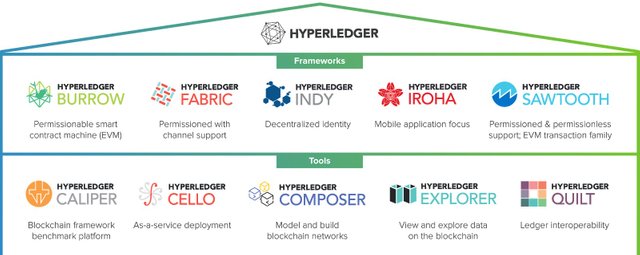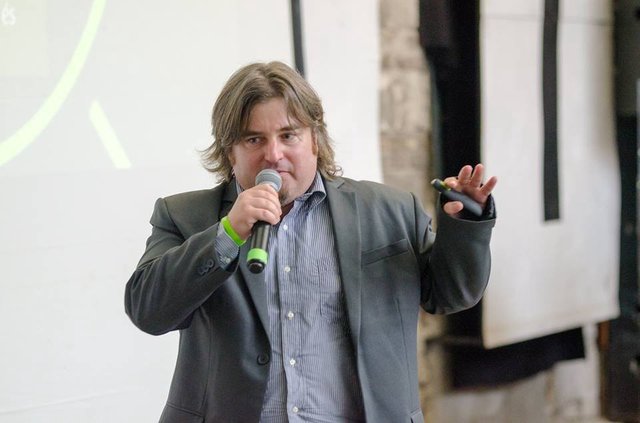Over the past few years, cryptocurrencies and open blockchain based platforms have undergone a significant hype. A lesser-known but also exciting area are the so-called consortium blockchain applications and enterprise ledgers. These platforms are generally not available to the general public, instead they are only limited to a particular industry segment or several participants, providing a platform for digital collaboration for certain companies. Considering a concrete example, let us imagine that there is a logistic supply-chain where we deliver mobile phones from China to Germany. In such an application, several companies have to work together, such as the Chinese manufacturer, land, sea and air carriers, and for example the German Commercial Department. This kind of cooperation is most likely conceived with consortium blockchains. In this article, we analyze in details the differences between public and consortium blockchains and give a brief overview on the existing platforms.
The following key features should be considered at analyzing consortium blockchain platforms:
“Trust” model: Perhaps the first and most important difference between a consortium and a public blockchain is the so-called trust model. In public platforms, trust is as minimal as possible realizing a totally trustless environment: anyone can download the software freely and anonymously, change and try to hack the system, despite the system must remain functional. In consortium systems, some actors know each other at a certain level. Even if they do not necessarily fully trust each other, they have a common interest in cooperation.
Performance: Consortium systems have to work much faster than their public counterparts. This is usually realizable: due to the different “trust” model, consortium blockchains usually run with a simplified consensus algorithm. For example, the speed of a public Ethereum network is 15 transactions per second, however it can be accelerated up to 100 transactions in a consortium implementation.
Privacy and permissions: For consortium platforms, the visibility and availability of individual transactions are much more demanding than for public blockchains. These systems are also known as permissioned blockchains.
Digital identity: At public systems, the user is usually a pseudonym, meaning that a randomly generated code sequence is the identification. At consortium platforms, this model is usually inadequate. Usually a classical digital identity system is integrated or implemented on the blockchain to identify users and transactions.
System integration: In a large enterprise environments, not only distributed general ledger technologies can be found, but also other existing software systems. For example, databases, corporate governance systems, existing centralized ledger technologies, digital document archives, etc. An important requirement for consortium systems is the possibility of easy integration with such systems.
Legal challenges: Another challenge is the compliance of consortium blockchains with legal requirements such as KYC, AML or GDPR. Such compliance is a much stronger requirement here than at the public blockchain counterparts.
Nowadays, the most important consortium platforms are the followings:
Ethereum consortium: Although Ethereum was basically designed to be a public blockchain technology, there are also consortium implementations as well [1]. An example of this is the so-called POA (Proof of Authority) Ethereum chain, which uses a simplified and only consortium consensus algorithm. As a consequence a larger number of transactions can be processed with it. Another example is the Etherem-based Quorum system. The system was developed by J.P.Morgan from Ethereum specifically for enterprise applications. In addition to higher performance, private transactions and private smart contracts are realized in Quorum as well.
Hyperledger: The Hyperledger project is an incubator of the Linux foundation, specifically for the implementing of open source consortium blockchain systems [2]. Hyperledger includes multiple full-fledged general blockchain frameworks and several so-called tools that provide generic services for multiple different consortium blockchain platforms.

Major Hyperledger frameworks are the followings:
- Fabric: Hyperledger Fabric is a modularly constructed consortium blockchain platform. The framework is open source, but the strongest player is IBM..
- Sawtooth: Hyperledger Sawtooth is a consortium blockchain framework with several innovative architectural design decisions. Examples include the joint execution of transactions or the built-in consensus mechanism.
- Burrow: Hyperledger Burrow is a modularly built blockchain solution that combines authorization management with an Ethereum-compatible smart contract solution.
- Iroha: Hyperledger Iroha is a lightweight consortium framework optimized to run on a mobile phone as well.
- Indy: Hyperledger Indy is a bit different from the previous frameworks, in sense that it does not want to implement a general consortium platforms. Instead, it only provides services for decentralized digital identity management.
The Hyperledger project provides the following tools
- Composer: With Hyperledger Composer, you can build smart contracts and blockchain applications quickly and efficiently with the help of a high level domain specific language.
- Explorer: Hyperledger explorer is a standard blockchain explorer. The only difference is that it cooperates with permissioned ledgers of the Hyperledger project.
- Cello: Hyperledger Cello provides assistance in installing any blockchain infrastructure, in most cases completely automatically.
- Caliper: Hyperledger Caliper is a performance monitoring and simulation tool.
- Quilt: Hyperledger Quilt can be used to deliver value transfer services between various centralized and decentralized ledgers.
- Ursa: a general cryptographic programming library for various cryptographic and blockchain algorithms.
R3 Corda: The R3 Corda platform represents a completely special architecture even among the consortium ledger platforms. The technology was built not only by being motvated by the public blockchain technology but also with the help of a consortium over 200 members to assess the requirements of the financial sector in relation to a decentralized platform [3]. As a result, technology has a number of surprising features so it is more a distributed ledger platform than a blockchain.Such features are:
- There is no global ledger, instead there are partially synchronized facts between the contributing partied.
- The ledger is stored in a UTCO format, however instead of coins digital contracts are available.
- There is no global broadcast, instead communication protocols between parties can be implemented as part of the decentralized application.
- Smart contracts also contain so-called legal prose that can be used as a classic legal contract. So basically code is not law.
Azure Blockchain: Azure Blockchain is Microsoft initiative to implement consortium blockchains [4]. At the moment, the system integrates several different existing ledger technologies, such as the Ethereum consortium or Corda. These are extended with a number of useful features such as:
- cloud hosting
- support for quick and automated installation of infrastructure
- digital identity integration through Active Directory
- user interface and application development framework (Azure Blockchain Workbench).
- easy integration with various external and internal systems (IoT, Dynamics, etc.).
Certainly, the whole area is quite new, so business requirements and existing frameworks are being changed pretty dynamically. Probably it will take a couple of years before we can be sure which areas and use-case provide truly breakthrough solutions. On the other hand however, the regulatory issues of consortium blockchain areas are far less problematic than at public blockchains. This might provide a chance for the technology to spread much faster and more smoothly.
References
[1] — Enterprise Ethereum Alliance, https://entethalliance.org/
[2] — Hyperledger Project, https://www.hyperledger.org/
[3] — R3 Corda, https://www.r3.com/
[4] — Azure Blockchain, https://azure.microsoft.com/de-de/solutions/blockchain/
Author — Daniel Szego / DLT Architect

Daniel Szego is a software architect and independent IT consultant focusing on the distributed ledger technologies, including but not limited to Ethereum, Hyperledger especially Fabric and Fabric composer or Azure Blockchain.
LinkedIn: https://www.linkedin.com/in/daniel-szego/
Github: https://github.com/Daniel-Szego
Rule No. 1: Never lose money. Rule No. 2: Never forget rule No.1
Downvoting a post can decrease pending rewards and make it less visible. Common reasons:
Submit
Comments were hidden due to low ratings.